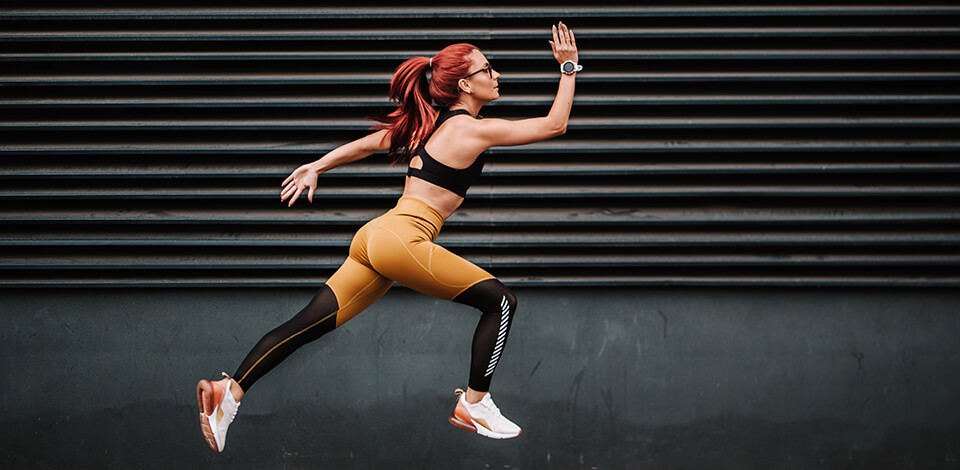
The sports photography cameras with rapid burst shooting and accurate autofocus.
If you’re still new to action-packed photoshoots, it’s important to know that the best cameras for sports photography aren’t just the ones with the biggest megapixel number.
You need a model capable of capturing the action with fast shutter speeds, high framerates, and a dependable autofocus.
However, that doesn’t mean that all quality sports cameras are very expensive which I show in my camera test below.
The overview below features models in the $450 to $6,500 price range, allowing everyone to find a suitable option for themselves.
Regardless of whether you’re interested in a basic camera for photography to take photos of your kids at school competitions, or an experienced photographer who plans to turn this into a business, you’ll find a suitable option below.
To make it easier for you, I’ve categorized all the cameras into two groups. The first category includes models better suited for beginners, while the last cameras are the optimal choices for professional photographers.
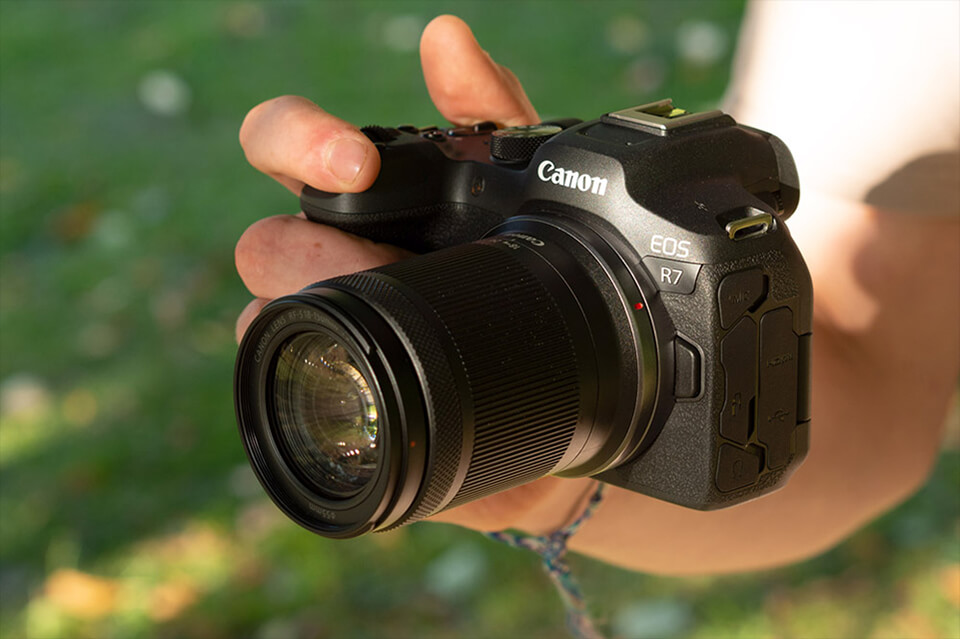
Type: Mirrorless | Resolution: 32.5MP | Continuous Shooting Speed: 15fps | Video Quality: 2160p
The EOS R7 is arguably the best camera for sports photography if you’re interested in a beginner model with great autofocus.
It excels at tracking the subject and focusing on people's heads even if they’re wearing goggles or helmets.
Another benefit of this camera is how easy it is to switch between automatic and manual focusing.
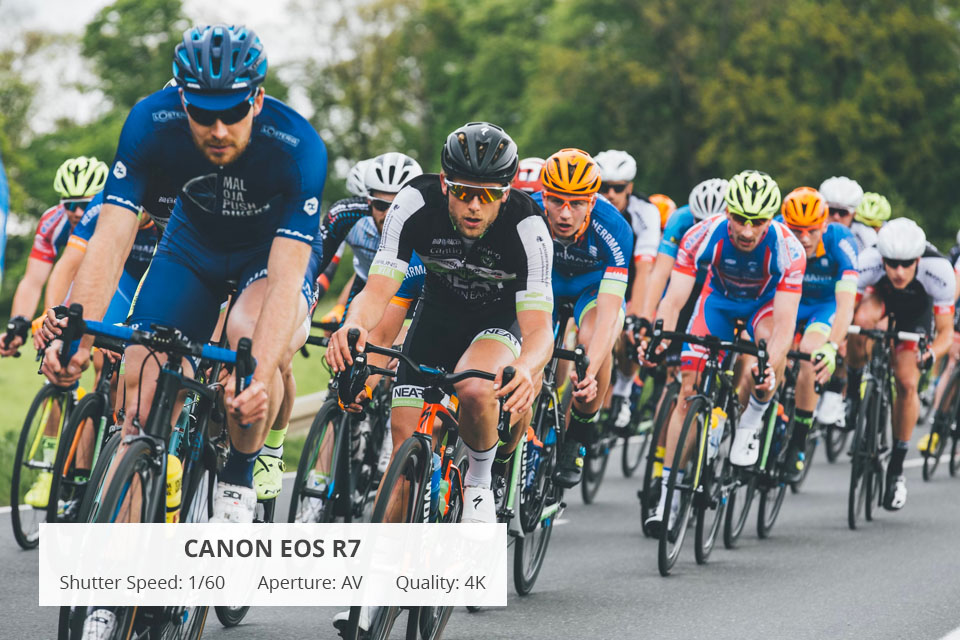
The biggest drawback of the EOS R7 is that it uses the APS-C sensor, but the provided optical viewfinder and highly dependable AF system still make this model a great choice for taking athlete, basketball, and football photos.
It can also snap up to 16 pictures per second using the mechanical shutter and up to 30fps digitally.
This way, you can guarantee you never miss an important moment.
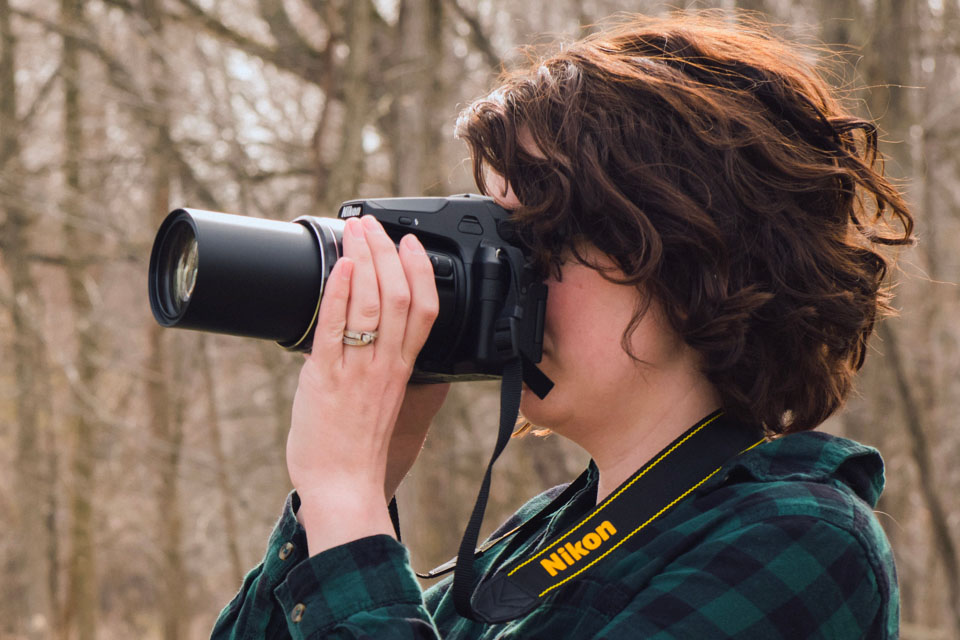
Type: Compact | Resolution: 16MP | Continuous Shooting Speed: 7fps | Video Quality: 4K
COOLPIX P950 offers fantastic zoom functionality for a budget model.
It’s supplied with an 83x optical zoom, allowing you to stay on the sidelines while taking beautiful close-up photos of the athletes playing the game without having to approach them to get high-quality results.
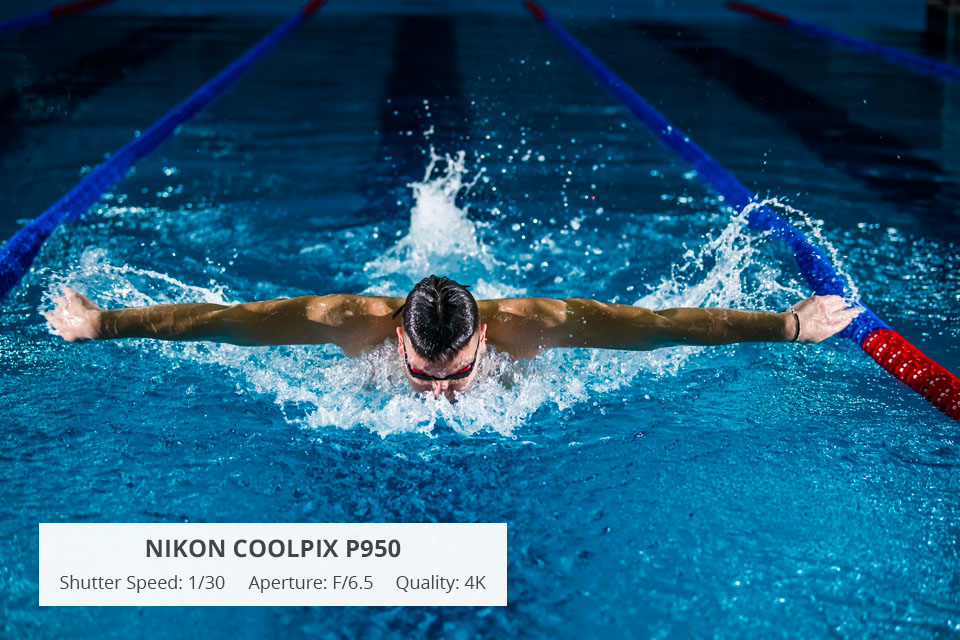
This compact camera is also known for its superfast shutter speeds, which are great for freezing action.
However, the autofocus isn’t as precise so beautiful shots can sometimes be ruined by poor focusing, which is a shame since in sports photography every millisecond counts.
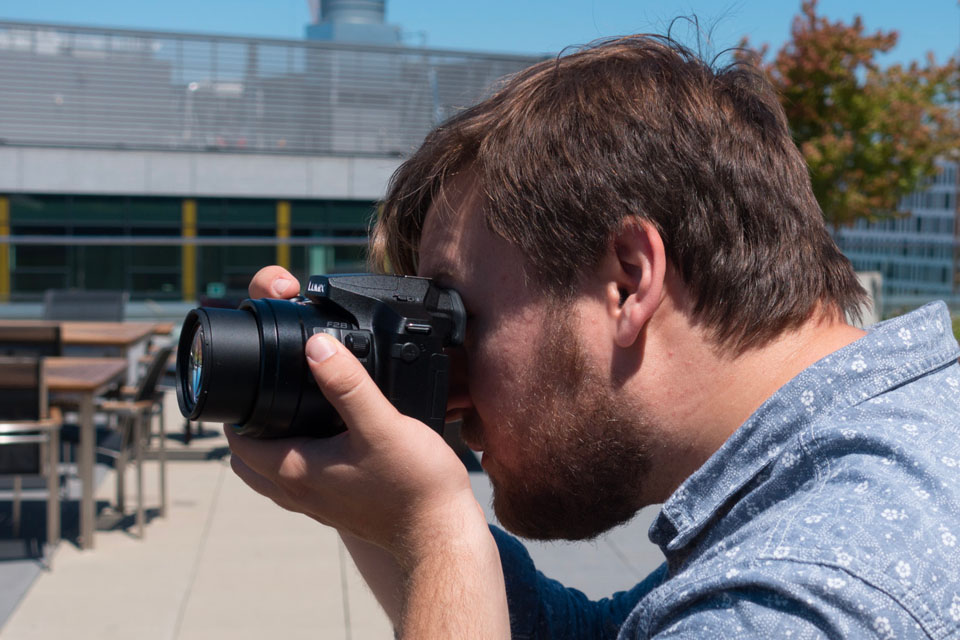
Type: SLR-like-compact | Resolution: 12.1MP | Continuous Shooting Speed: 30fps | Video Quality: 4K
The DMC-FZ300 is a great action and sports photography camera that has a splash- and dust-resistant body, which makes it perfectly suited for rough outdoor use.
It also offers an impressive 24x zoom with an f/2.8 aperture across the entire range, which is exactly what you need when working in low-light environments, for example, when taking tennis images, as you can maintain high sharpness and minimize motion blur.
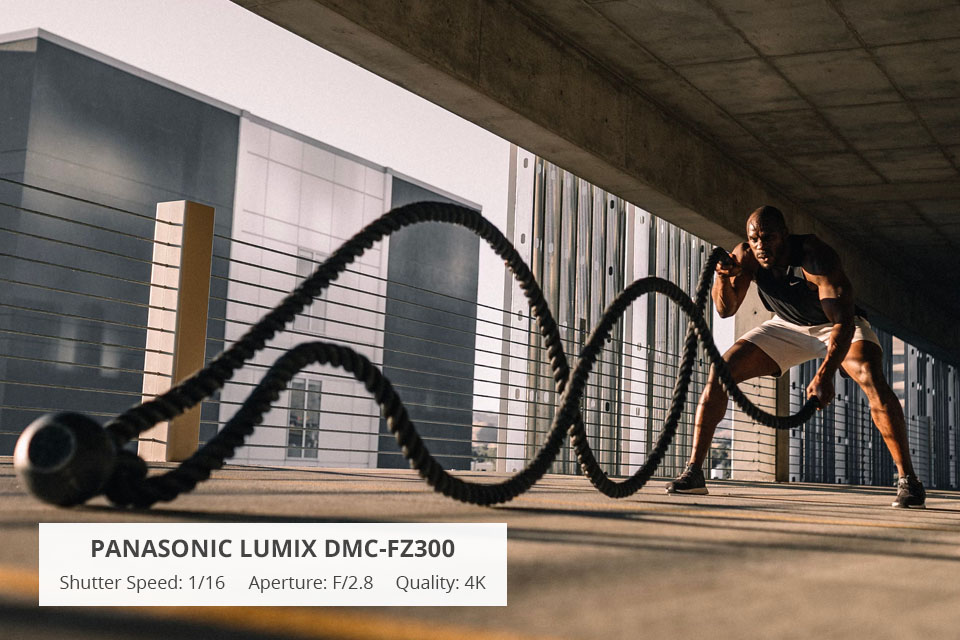
The DMC-FZ300 has a 12.1MP sensor powered by a Venus engine, and even though this is not particularly impressive compared to what you can get from premium DSLRs, it still offers good performance for a budget model.
The picture quality is solid and the diffraction compensation allows you to enjoy high sharpness even when you’re lowering the aperture.
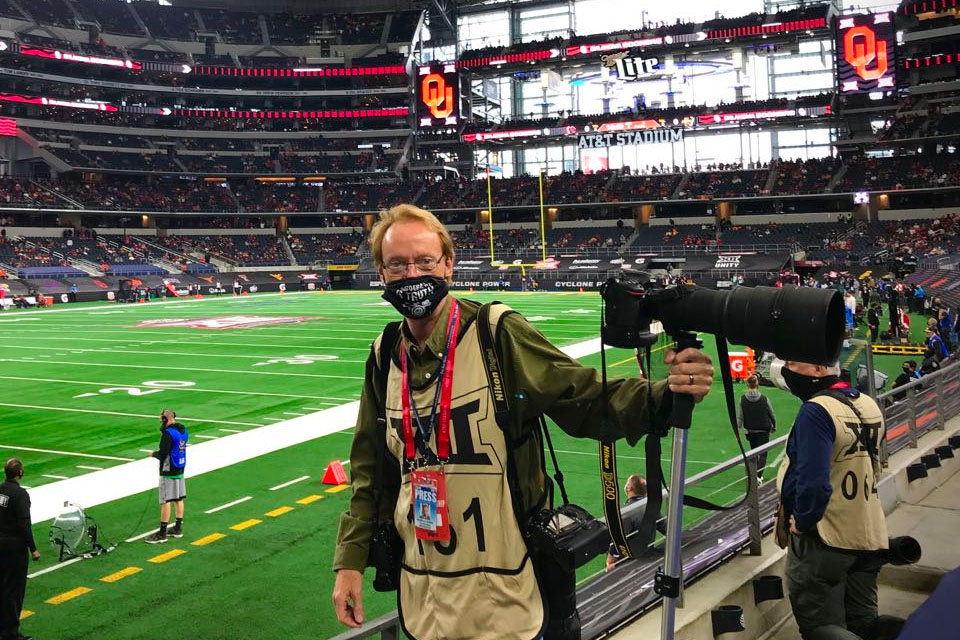
Type: DSLR | Resolution: 20.9MP | Continuous Shooting Speed: 10fps | Video Quality: 4K/30fps
The Nikon D500 earned its spot among the best cameras for sports photography because it allows you to take pictures at 10fps, allowing you to capture the most important moments even when taking photos of skateboarders or football players rushing down the field.
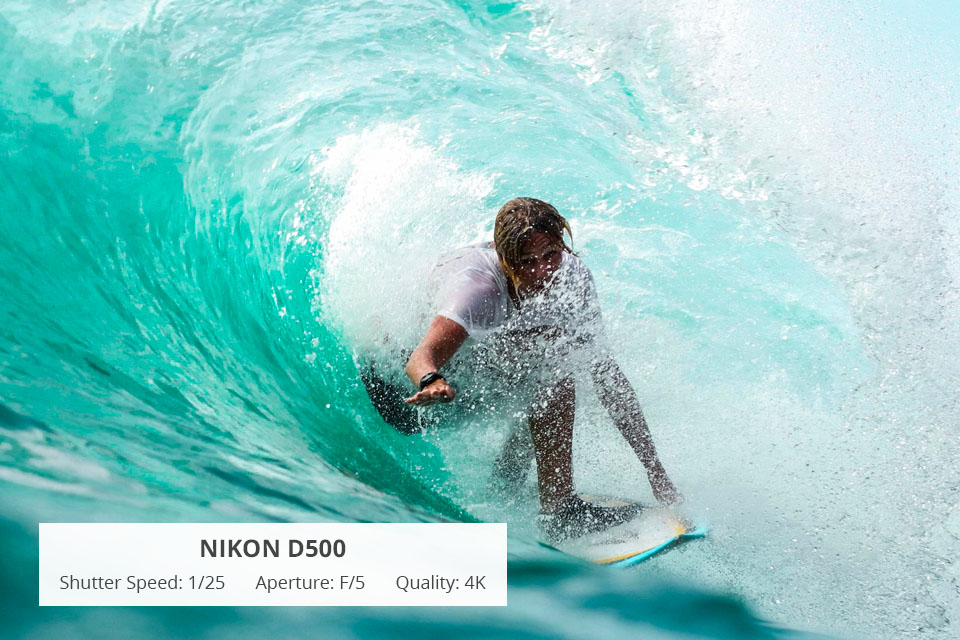
The superfast shutter speed of 1/8000s allows you to capture any moment of the sports event you’re working at.
Meanwhile, the articulating display makes the D500 much more convenient to use. This camera also produces crisp, eye-catching colors, and you can use it with nearly any AF Nikon standard lens, which makes this model pleasantly versatile.
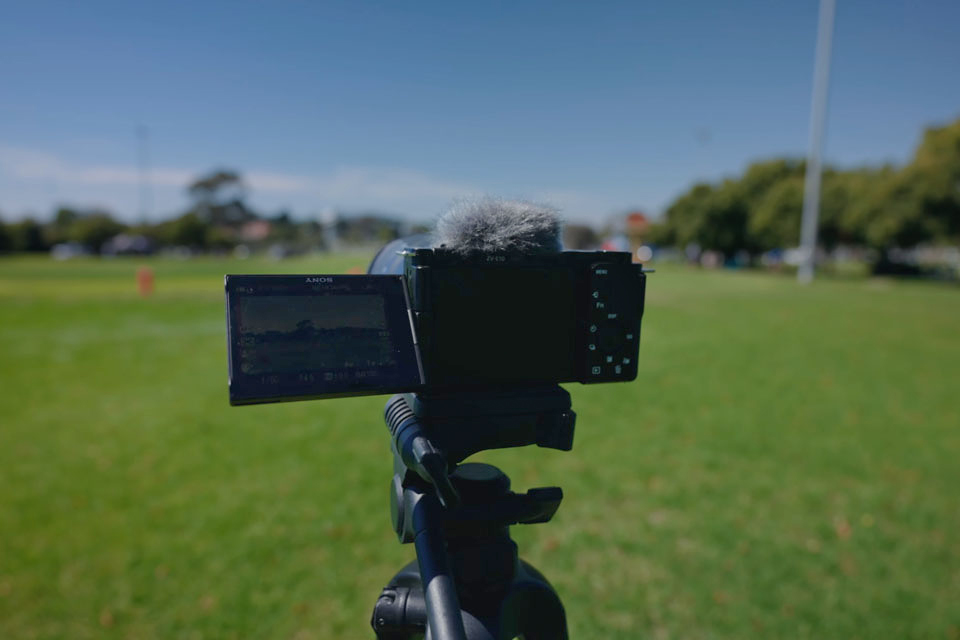
Type: Mirrorless | Resolution: 20.1MP | Continuous Shooting Speed: 11fps | Video Quality: 2160p
The a6400 is a solid consideration if you’re looking for good cameras for sports photography that can capture dynamic action.
It’s equipped with an APS-C sensor, meaning this isn’t a full-frame model, but it’s still big enough to snap high-quality pictures and it even allows you to crop your shots without sacrificing a lot of detail.
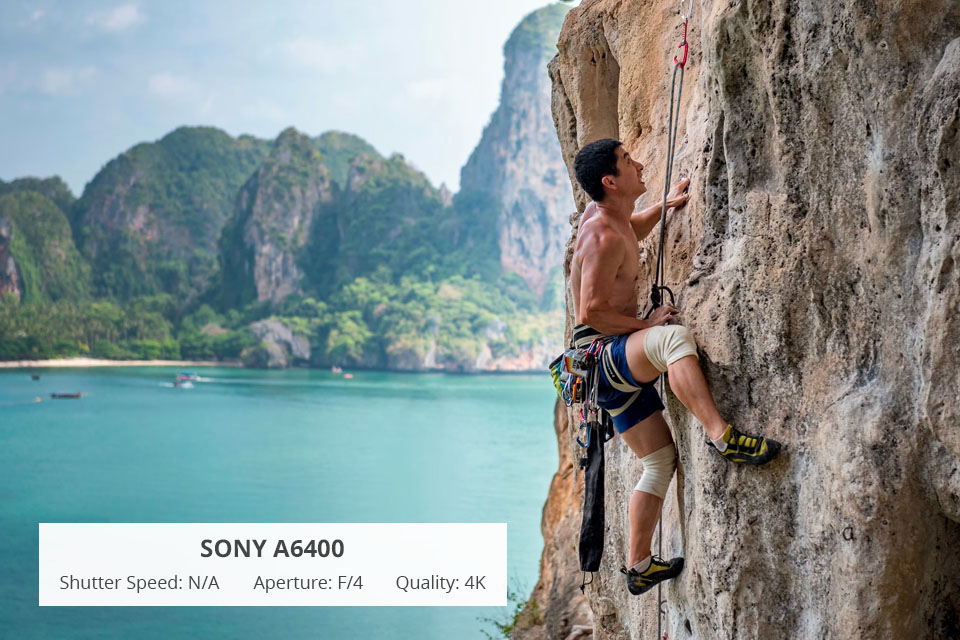
The a6400 allows you to take up to 11 photos per second with AF tracking enabled, which is essential when taking pictures of a late-game goal or an athlete crossing the finish line.
The best feature of this video camera for sports is the Real Time Tracking autofocus.
Regardless of whether you’re taking pictures of a sprinter or doing soccer photography, the main subject will always be in focus.
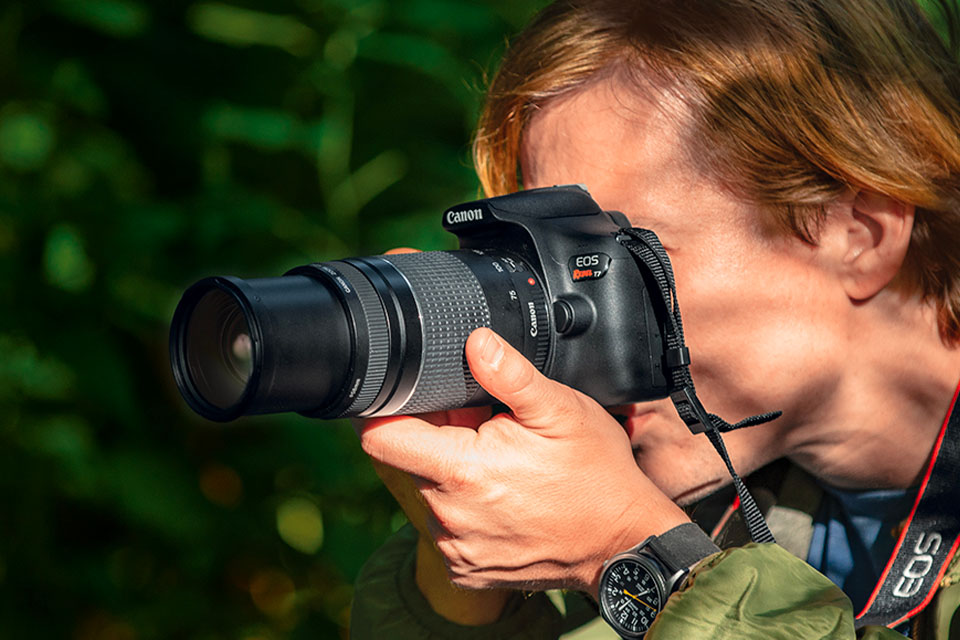
Type: DSLR | Resolution: 24.1MP | Continuous Shooting Speed: 3fps | Video Quality: FHD 1080p
The EOS Revel T7 is a respectable beginner-friendly DSLR that offers a high-resolution APS-C sensor and broad ISO coverage (100-6,400, which can be increased to 12,800).
It allows you to receive solid results in low-light conditions, but you can’t expect to get the same results you would from a premium DSLR.
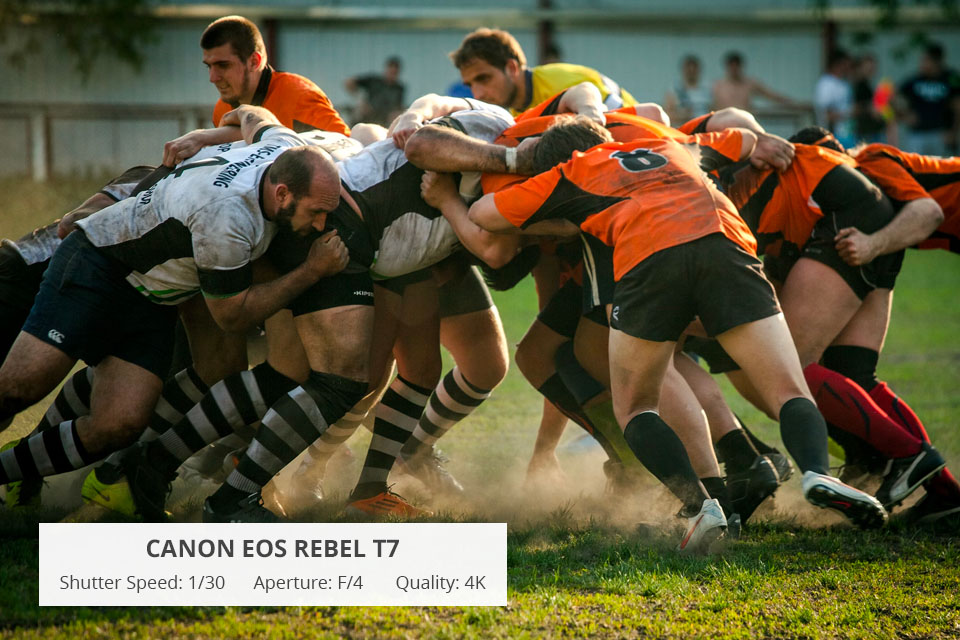
This amateur camera is supplied with a 9-point AF system supported by AI Servo AF, which, sadly, doesn’t offer particularly impressive performance when capturing high-octane action.
The continuous shooting mode is also somewhat slow for fast-paced sports. However, it can still work as the first sports camera for a beginner photographer on a limited budget.
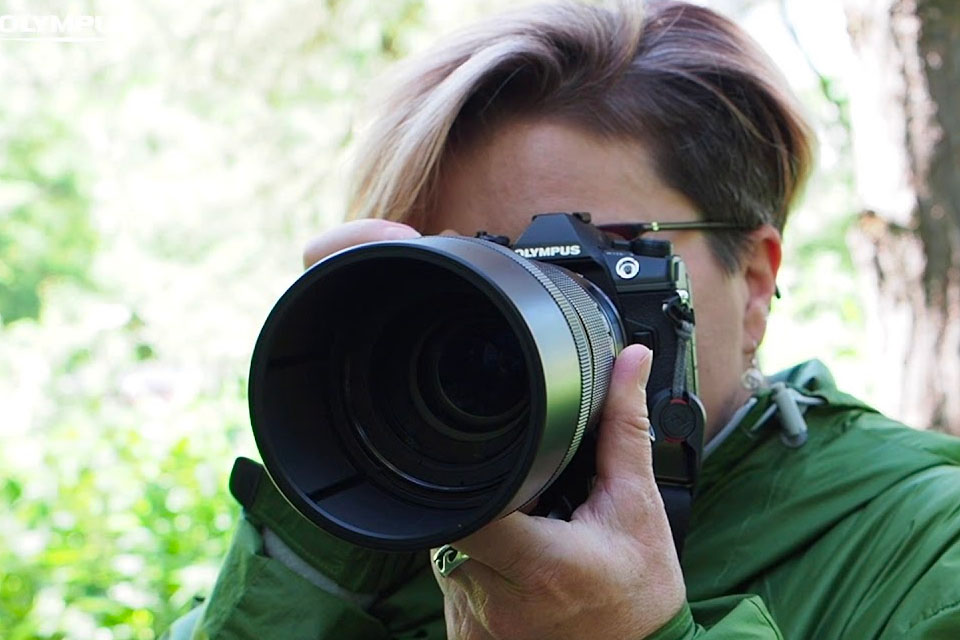
Type: Mirrorless | Resolution: 20.4MP | Continuous Shooting Speed: 60fps | Video Quality: 4K UHD 2160p
The OM-D E-M1 Mark II is packed into a compact unit while offering impressive functionality for its price. It has 121 all-cross-type phase-detect AF points that allow you to focus on athletes in motion with maximum precision, which is essential for fast-paced events.
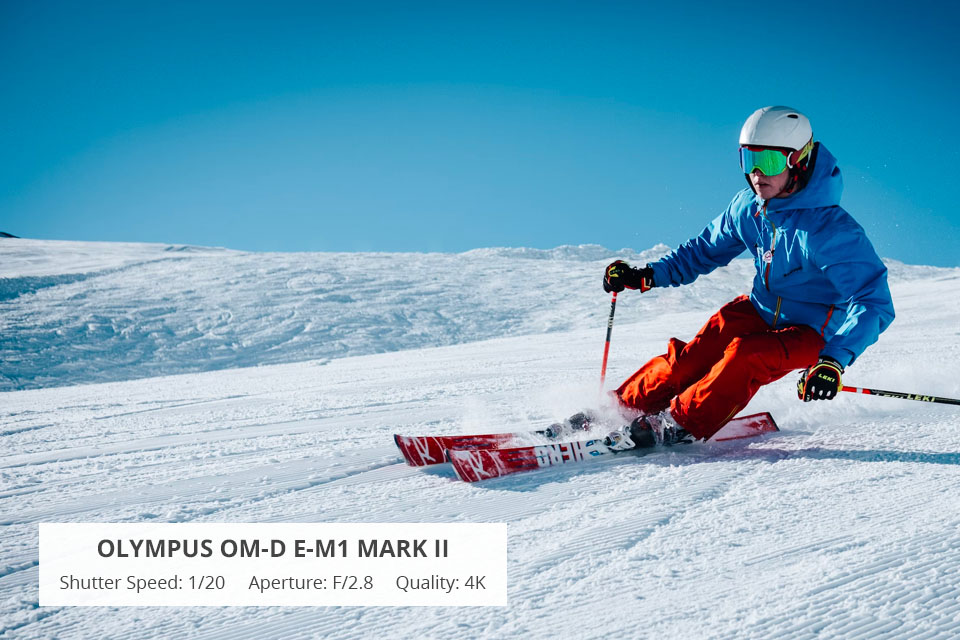
The main feature that makes this model a good camera for sports photography is the Pro Capture mode which is perfect for ensuring you never miss an important split-second moment.
It relies on a half-pressed shutter to create a buffer of 14 full-resolution JPG or RAW photos, allowing you to always keep up with the action.
The biggest drawback of this beginner camera is the unintuitive menu.
If you’ve never used an Olympus camera before, it will take some time getting used to the available options and features.
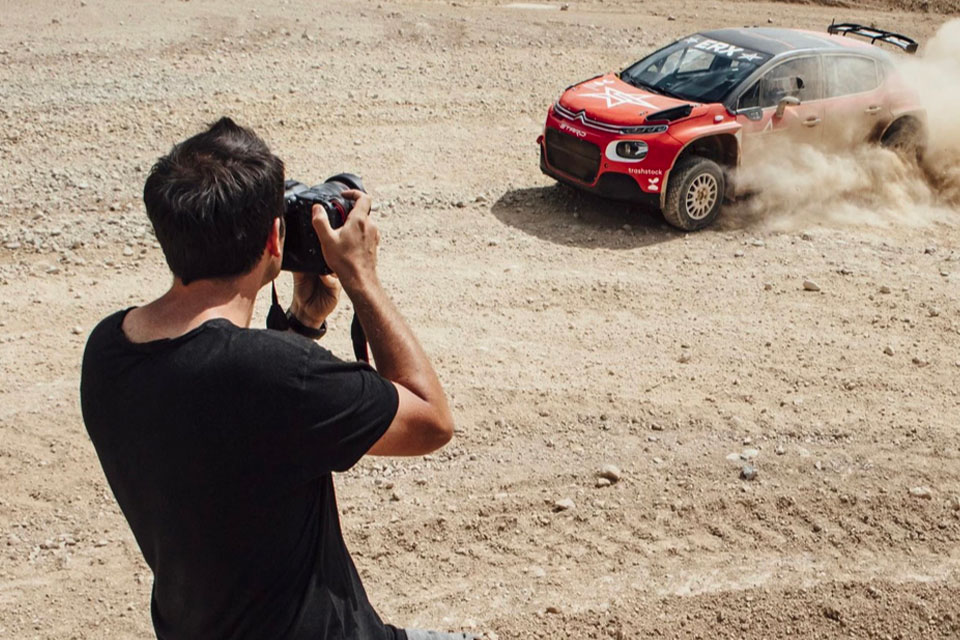
Type: Full Frame, Mirrorless | Resolution: 24.1MP | Continuous Shooting Speed: 30fps | Video Quality: 1280p
Canon EOS R3 deserves a lot of praise for its eye control autofocus.
You simply have to aim the lens at the subject and the camera will ensure it’s in focus.
The anti-flickering mode is another great benefit, which is particularly useful for indoor sports events with artificial lighting.
The lack of flickering ensures all the photos you take are crisp and clean.
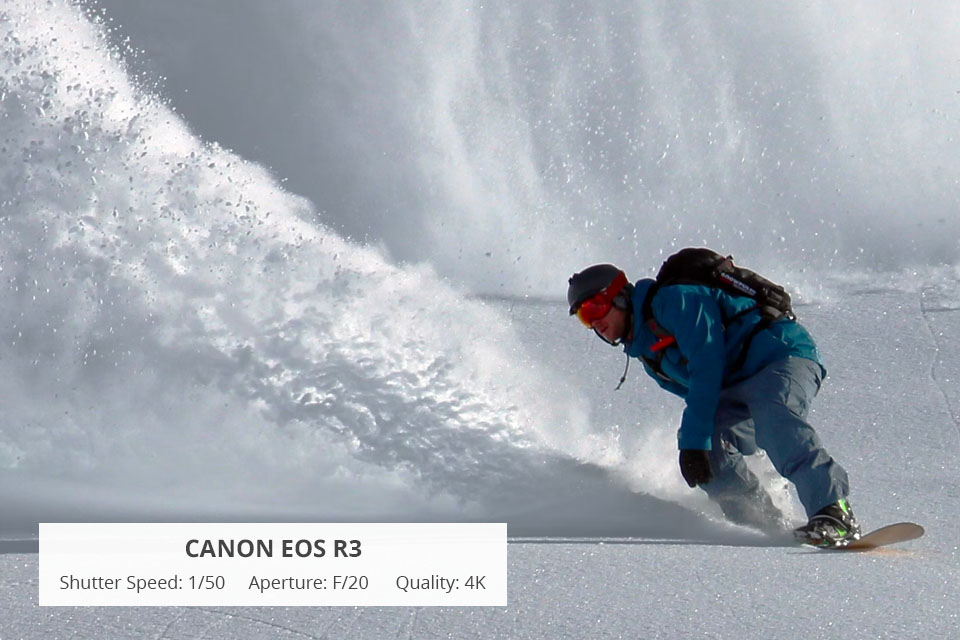
This model has a burst shooting mode speed of 30fps, which is great for an electronic shutter and for capturing defining action moments.
Keep in mind that such a fast shutter does mean you’ll have to use lots of spacy SD cards and spare batteries since this Canon camera goes through them very fast.
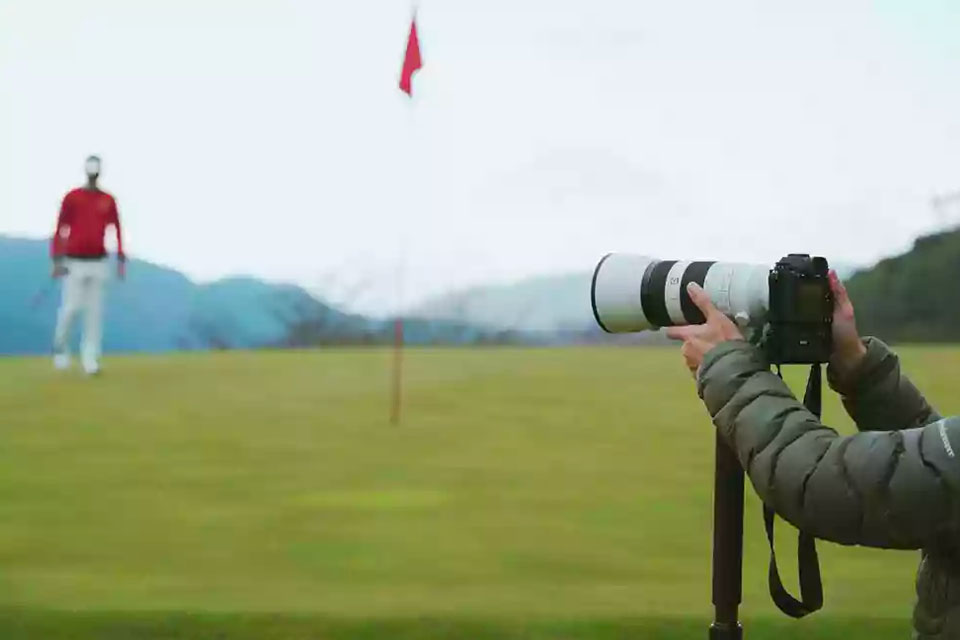
Type: Full Frame, Mirrorless | Resolution: 50MP | Continuous Shooting Speed: 30fps | Video Quality: 4320p
The Sony A1 will ensure you’re always on top of what’s going on at the track or on the field.
Unlike most other cameras for sports photography covered in this review, this model has a full-frame sensor and an impressive continuous shooting speed of 30fps.
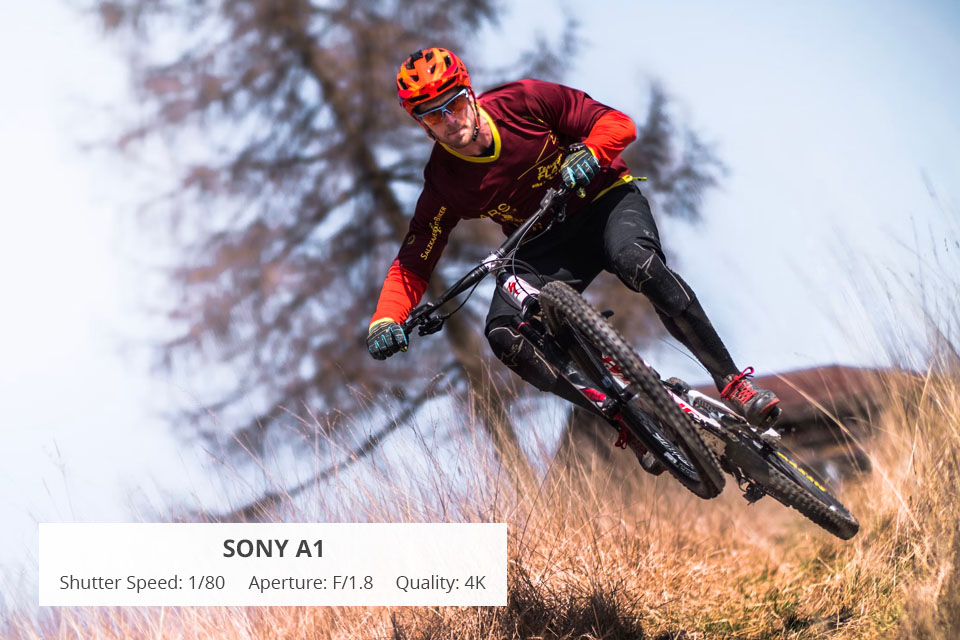
This Sony camera excels at instantly focusing on the subjects and tracking their movement across the frame.
Regardless of whether you’re taking photos of an athlete doing a 100-yard dash, or a football player running to score a touchdown, the A1 will capture the perfect moment every time.
The biggest potential drawback is the high cost of this camera.
This is professional-grade equipment, so both your skill level and budget must be ready for it.
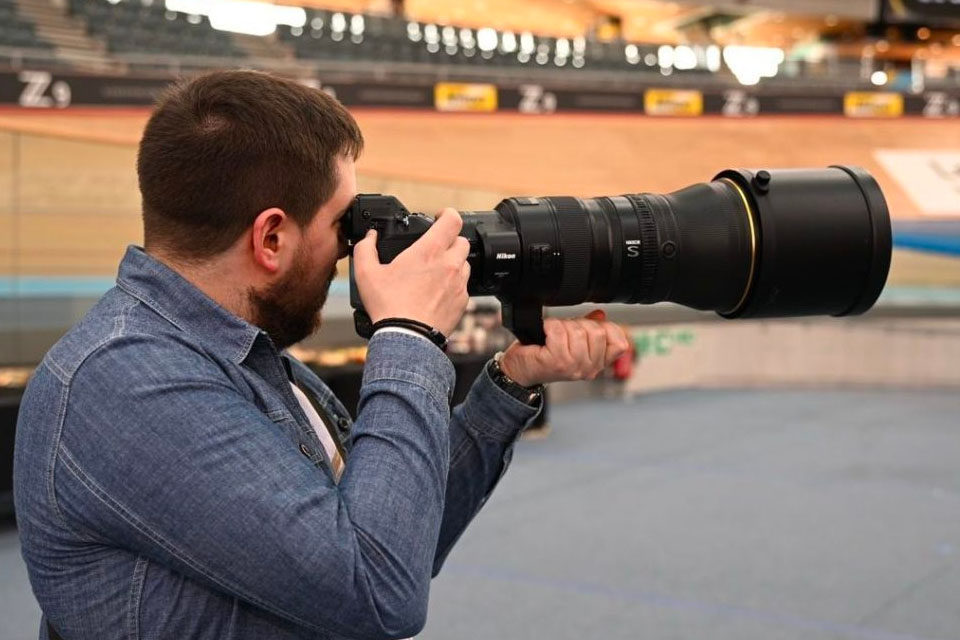
Type: Full Frame, Mirrorless | Resolution: 45.7MP | Continuous Shooting Speed: 120fps | Video Quality: 4K/30p
I was blown away by the Z9’s 120fps continuous shooting mode that makes it incredibly easy to never miss an important moment, whether you’re taking pictures of a skateboarder during a trick, or a surfer riding a wave.
Its buffer is immense, allowing you to continue snapping photos without any performance drops, which is truly groundbreaking.
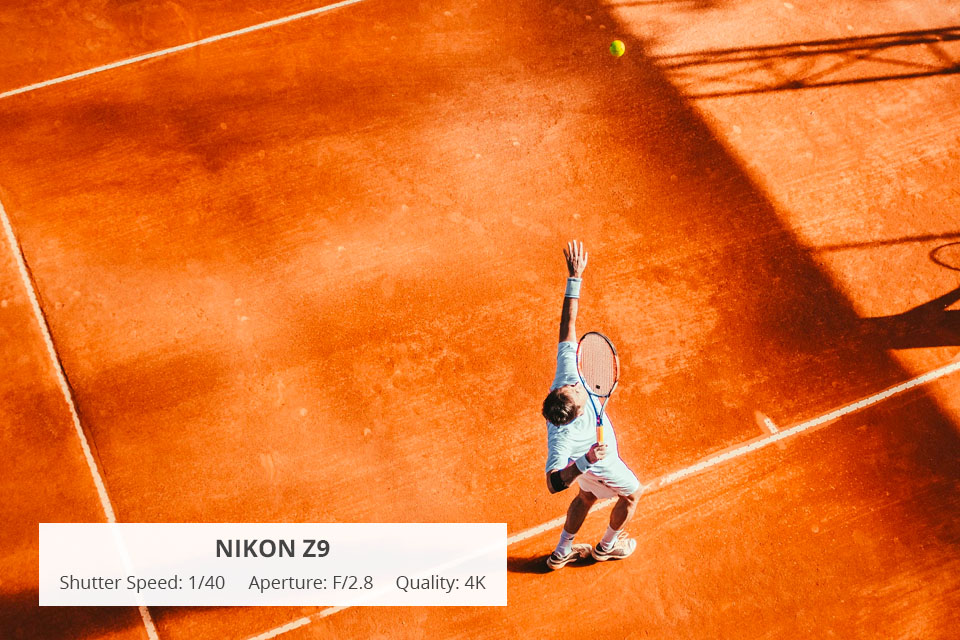
The autofocus system is another stellar feature of this Nikon video camera.
The Z9 employs deep learning technology, which allows it to detect and track a broad list of subjects – be it people, wildlife, or cars.
It can sometimes make mistakes, as you might need to do some manual work when dealing with some patterns or extremely poor lighting conditions, but generally, it’s highly precise.
Even though DSLR cameras have several advantages over mirrorless models – they come with reliable AF systems, employ optical phase-detect tech, and an optical viewfinder, which allows you to instantly see the subject – there's a wide range of mirrorless models that deserve to be mentioned due to their superfast burst modes and dependable AF tracking.
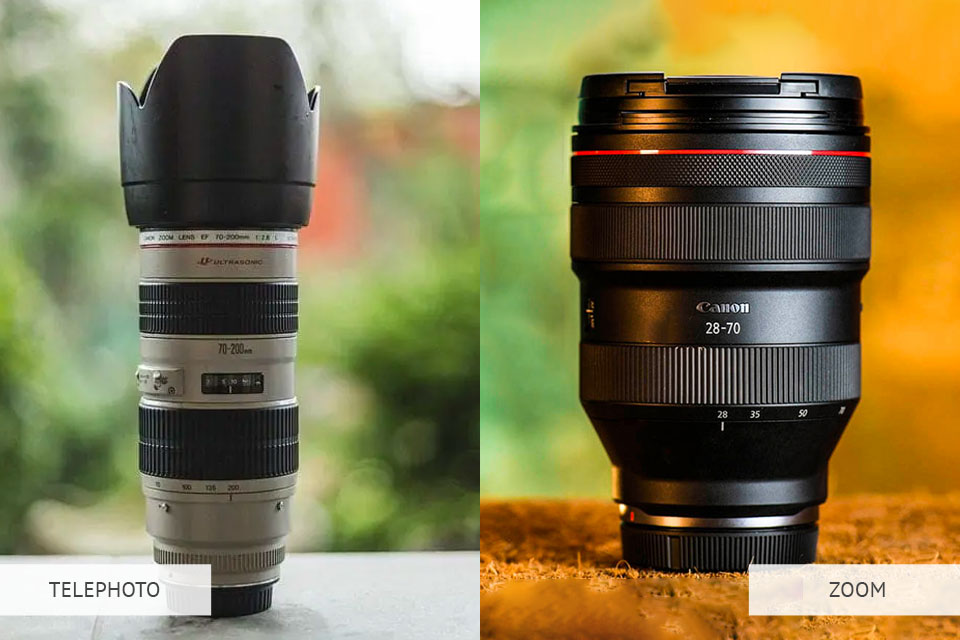
Sensor size. Full-frame cameras allow you to set a shallower depth of field, which is incredibly handy when you’d like to separate the athletes from their surroundings. Such models also suffer from a lot less noise at identical ISO settings, which can be a lifesaver in poorly lit environments.
However, they also have a serious drawback when it comes to sports photography – they don’t have a crop factor. As such, if you want to employ a telephoto lens, you’ll need to purchase a model with a longer focal length compared to lenses purchased for APS-C sensors.
The Nikon DX series APS-C cameras have a crop factor of 1.5. As such, if you use a lens with a focal of 200mm, for example, then the crop factor ensures the image you get is identical to a 300mm focal length picture you’d get from their full-frame cameras.
Autofocus system. One of the most important aspects here is the point count. The higher their number, the more refined the tracking mechanism. The cameras continue tracking the subject even when it changes direction or suddenly stops.
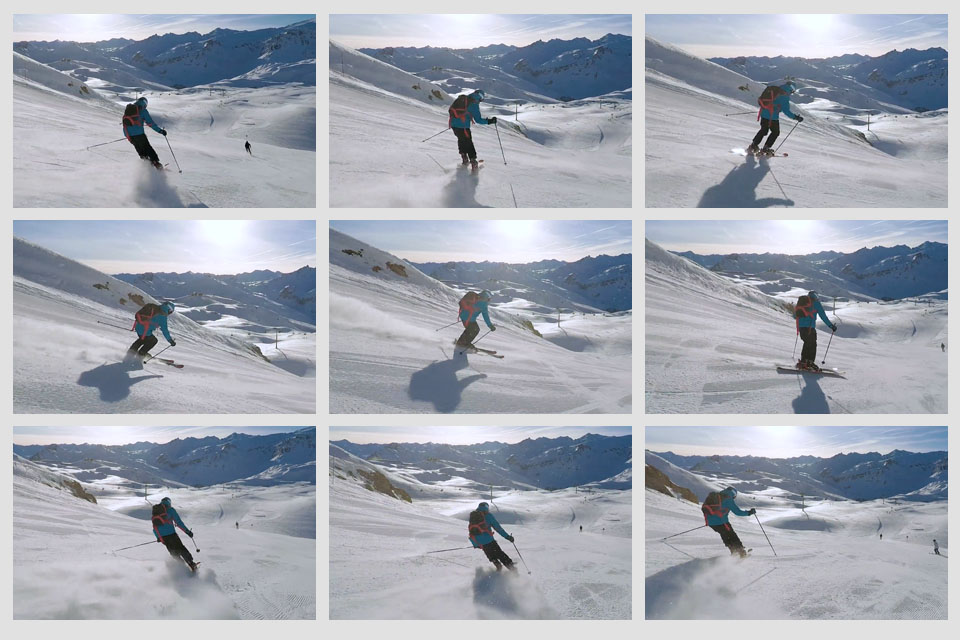
Continuous shooting speed. With a fast burst mode speed, you’ll be able to take photos of every important moment, which is why you should get a model that allows you to snap at least 10 frames per second.
High shutter speed. Most modern cameras offer a solid shutter speed of 1/1000 per second. This value is more than enough for taking pictures of moving athletes and players.
| Shutter Speed | Subject |
|---|---|
|
1/2000 or faster |
Professional sports |
|
1/1000-1/2000 |
Soccer, football, tennis, baseball, softball |
|
1/500-1/1000 |
Basketball, wrestling, gymnastics, mountain biking, rodeo |
|
1/250-1/500 |
Slow jogger, surfing, dancing |
|
1/125-1/250 |
Walker |
Image stabilization. This is a must-have feature since there are often situations when you can’t attach your camera to a tripod to provide the necessary stability. When taking photos that include a lot of motion, it’s a good idea to prioritize lens-based image stabilization. It can be particularly effective for minimizing camera shake when shooting with long telephoto lenses.
Weather resistant. Most sports events are organized outdoors, which means there’s a reasonable chance that it might start raining or snowing during the competition. If you want to ensure you can continue taking photos even in such extreme circumstances, pick a model that offers dust, moisture, and collision protection and has a durable body made of a strong and lightweight alloy, or get a waterproof camera.
| Canon EOS R7 | Nikon COOLPIX P950 | Panasonic LUMIX DMC-FZ300 | |
|---|---|---|---|
|
|
My choice |
Compact |
Cheap |
|
Sensor Size |
APS-C |
APS-C |
1/2.3-inch |
|
Image Stabilization |
✔️ |
✔️ |
✔️ |
|
Frame Rate |
High |
Low |
High |
|
Low Light |
❌ |
✔️ |
❌ |
|
Weather-Resistant |
✔️ |
❌ |
✔️ |
Together with Nataly from the FixThePhoto Team I put together a table that compares the field test results of the three top options provided by reputable camera brand manufacturers.
The Canon EOS R7 arguably deserves to be considered the best sports photography camera on the market thanks to its superfast burst shooting mode and cutting-edge AF system, offering the speed and accuracy required when working at action-packed sports competitions and races.
I was extremely impressed by the provided picture quality, as all my photos looked clear and crisp, and offered natural colors.
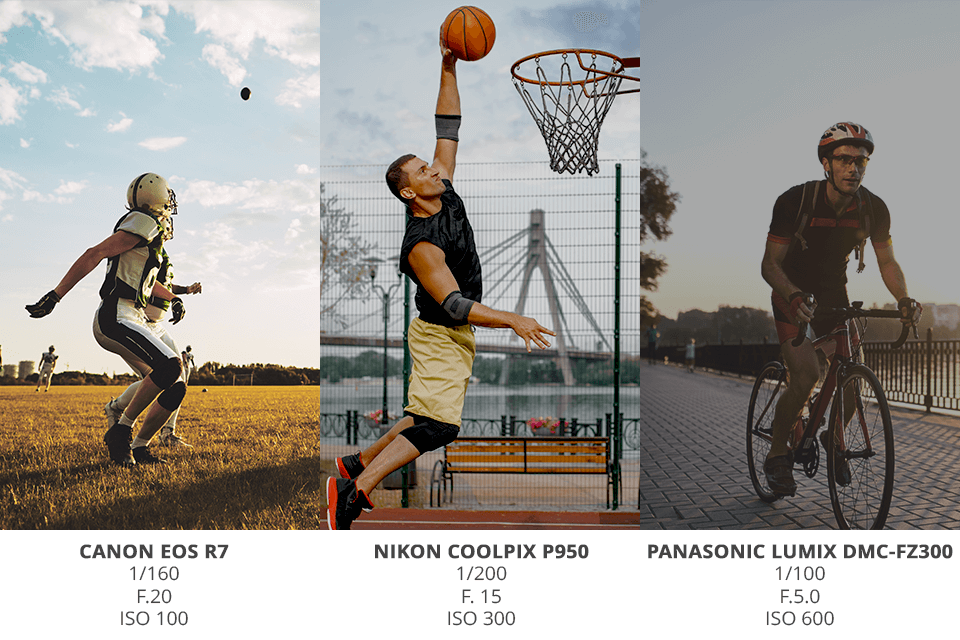
The Nikon COOLPIX P950 deserves your attention due to its wide optical zoom range and dependable image stabilization, which lets you take long-distance sports action photos without any camera shake or blur. I took a couple of pictures at 20x zoom and all of them look clear, detailed, and full of life.
The Panasonic LUMIX DMC-FZ300 provides terrific shooting speed, a solid zoom range, and a sturdy body with weather-resistant properties. After my gear tests, its picture quality is inferior to the first two cameras, but it’s the better option for poor weather conditions and can also be used as a GoPro alternative when traveling.
It’s usually a good idea to begin with a high shutter speed to freeze the action. Set it to about 1/1,000 of a second and make adjustments according to the lighting conditions. Consider using aperture priority mode. Remember to switch the AF system to continuous or tracking mode so that it’s capable of handling moving subjects. The last thing you can do is get a lot of practice since no one becomes a master by just reading tips online.
DSLRs were the preferable option in the past due to their quick AF and superior batteries. However, beginner mirrorless cameras have upped their game a lot recently. They’re more lightweight and the technology they use doesn’t suffer from any lags. The choice between the two camera types depends on your specific handling preferences and individual shooting style.
Full-frame cameras are great because they provide superior picture quality and better results in subpar lighting conditions. However, crop-sensor cameras can also be great and are a particularly good fit for sports photography since they provide the much-needed reach when taking pictures of players from a bigger distance.